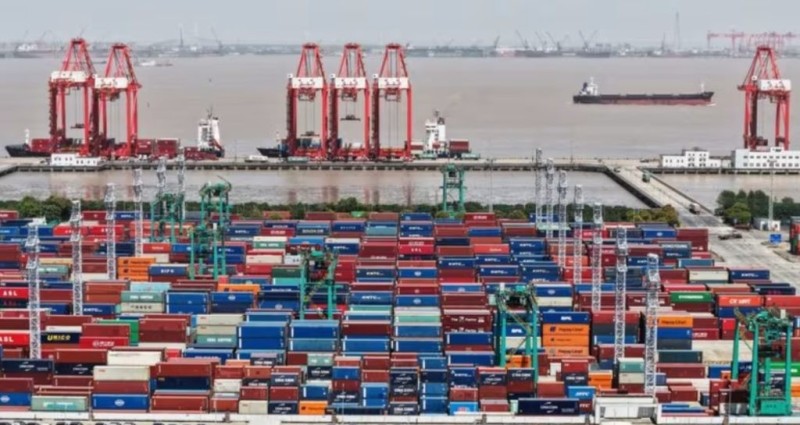
China’s economy grew at a slightly faster pace than expected in the second quarter, showing resilience in the face of US tariffs, though analysts warned of intensifying headwinds that will ramp up pressure on policymakers to roll out more stimulus.
The world’s second-largest economy has so far avoided a sharp slowdown in part due to a fragile US-China trade truce and policy support, but markets are bracing for a weaker second half as exports lose momentum, prices continue to fall and consumer confidence remains low.
Recent data showed China’s gross domestic product (GDP) grew 5.2% in the second quarter of 2025 (2Q 2025) from a year earlier, slowing from 5.4% in 1Q, but just ahead of analysts’ expectations in a Reuters’ poll for a rise of 5.1%.
“China achieved growth above the official target of 5% in 2Q partly because of front loading of exports. The target growth in 1Q and 2Q provides the government room to tolerate some slowdown in the second half of the year,” said Pinpoint Asset Management chief economist Zhiwei Zhang.
On a quarterly basis, GDP grew 1.1% in 2Q 2025 – as shown by a National Bureau of Statistics data – compared with a forecast of 0.9% increase and a 1.2% gain in the previous quarter.
Investors are closely watching for signs of new stimulus at the upcoming Politburo meeting in late July, which is likely to shape economic policy for the remainder of the year.
Beijing has also ramped up infrastructure spending and consumer subsidies, alongside steady monetary easing. In May, the central bank cut interest rates and injected liquidity as part of broader efforts to cushion the economy from US President Donald Trump’s trade tariffs.
Further monetary easing is expected in the coming months, while some analysts believe the government could ramp up deficit spending if growth slows sharply.
However, China observers and analysts said stimulus alone may not be enough to tackle entrenched deflationary pressures, with producer prices in June falling at their fastest pace in nearly two years.
Meanwhile, China’s Capital Economics economist Zichun Huang said that the GDP data ‘probably still overstate the strength of growth’.
“And with exports set to slow and the tailwind from fiscal support on course to fade, growth is likely to slow further during the second half of this year (2H 2025),” Huang said.
Imports, on the other hand, rose 1.1%, topping the 0.3% gain predicted and marking the first growth this year.
Recent data also showed that China’s exports regained some momentum in June while imports rebounded, as factories rushed out shipments to capitalise on a fragile tariff truce between Beijing and Washington ahead of a looming August deadline.
Ultimately, China is aiming for full-year growth of around 5%,
The latest Reuters poll projected GDP growth to slow to 4.5% in 3Q 2025 and 4% in 4Q 2025, underscoring mounting economic headwinds as Trump’s global trade war leaves Beijing with the tough task of getting households to spend more at a time of uncertainty.
Data of June activity, however, painted a mixed picture as industrial output grew 6.8% year-on-year (YoY), quickening from the 5.8% pace in May and beating forecasts, but retail sales growth slowed down.
Fixed-asset investment grew 2.8% in the first six months from a year earlier, slowing from 3.7% in January-May and missing analysts’ forecast of 3.6%.
China’s Exports Beat Forecasts After US Tariff Truce
Moreover, China’s customs figures showed that the country’s exports to the US surged 32.4% last month, having fallen the month before, according to an AFP calculation based on official data.
“Growth in export values rebounded somewhat in June, thanks to the US-China trade truce. But tariffs are likely to remain high and Chinese manufacturers face growing constraints on their ability to rapidly expand global market share by slashing prices,” Huang continued.
Meanwhile, many other economists argue that China needs to shift towards a growth model propelled more by domestic consumption than the traditional key drivers of infrastructure investment, manufacturing and exports.
Since last year, Beijing had introduced a number of measures in a bid to boost spending, including a consumer goods trade-in subsidy scheme that briefly lifted retail activity.
Source: https://sme.asia/china-2q-growth-beats-expectations-yet-challenges-loom-ahead/

